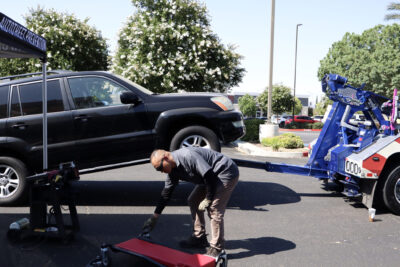Running a restaurant today is nothing like it was a decade ago. The pace is faster, the expectations higher, and the competition fiercer. Diners want seamless service, personalized experiences, and zero friction at every touchpoint—from booking a table to paying the bill. For owners, this means that traditional ways of doing business just don’t cut it anymore. Enter simple Tech That Makes Life Easier for Restaurant Owners: a suite of smart, often surprisingly affordable digital solutions designed to free up time, reduce stress, and deliver a better guest experience. Embracing this shift isn’t a luxury—it’s the key to staying competitive and thriving in a crowded market.
Restaurant owners who recognize the value of these tools are reaping the rewards. Instead of spending hours manually tracking reservations, dealing with double-bookings, or untangling staff schedules scribbled on a whiteboard, they’re turning to software that automates these headaches. And it’s not just about efficiency—it’s about creating a better atmosphere for staff and guests alike. When employees aren’t overwhelmed with repetitive admin, they can focus on what really matters: providing genuine hospitality that keeps guests coming back. This article will break down the many ways technology is quietly revolutionizing restaurant operations, from reservations to kitchens to staff management.
Embracing Digital Solutions: A New Era for Restaurants
The restaurant industry is experiencing a digital renaissance, and it’s changing the entire landscape of how owners and staff approach their daily work. Gone are the days when a spiral-bound reservation book and handwritten orders were enough to keep up with the demands of modern diners. Technology today offers sophisticated solutions for managing reservations, coordinating staff schedules, tracking inventory, and even marketing to guests in highly personalized ways. This transformation doesn’t mean replacing human service with cold automation. Rather, it’s about eliminating the tedious, error-prone tasks that drain time and energy from staff who’d rather be delivering top-notch experiences.
Adopting efficient restaurant reservation management software is one of the clearest examples of this shift. It allows restaurants to keep bookings organized in real time, automatically confirm reservations with guests, and avoid costly overbookings or no-shows. But this is only one piece of a much larger puzzle. Inventory systems now alert managers before they run out of crucial ingredients. POS systems integrate with accounting tools to simplify financial management. And marketing platforms use customer data to deliver targeted promotions that drive loyalty. By embracing this tech ecosystem, restaurant owners are building a foundation for long-term stability and growth.
“Technology in restaurants isn’t about removing the human element—it’s about empowering staff to deliver it with greater consistency, speed, and care.”
Beyond the operational benefits, digital tools provide a competitive edge in a crowded market. Diners have endless choices today, and their expectations are shaped by other industries that offer seamless online experiences. A restaurant that can match that ease—by letting guests book, customize, and even pay through a single interface—stands out. Simple Tech That Makes Life Easier for Restaurant Owners isn’t just about streamlining work; it’s about meeting the modern diner on their terms while keeping the business profitable and sustainable.
Reservation Management and Customer Experience
Reservation management is often the first point of contact between a restaurant and its guests—and it can set the tone for the entire experience. Traditionally, this was handled by a host with a phone and a paper ledger, juggling calls during busy service hours while trying to keep track of which tables were actually free. This method was ripe for errors, miscommunications, and lost revenue through accidental overbookings or no-shows. By investing in dedicated reservation software, restaurants gain a central, always-updated system that synchronizes bookings across channels, sends automatic confirmations, and allows diners to book at any hour of the day.
This streamlined approach doesn’t just help staff—it also improves the guest experience. Diners increasingly expect the convenience of online reservations with instant confirmations and the ability to modify or cancel without fuss. They appreciate receiving reminders before their meal, reducing the chance they forget and leave a valuable table empty. For owners, this means fewer lost covers and a more predictable flow of business. Reservation systems also capture valuable data, such as guest preferences or dining history, which can be used to personalize future experiences and increase loyalty.
In addition to these core benefits, modern reservation software often integrates with marketing tools, making it easier for owners to re-engage past guests. Imagine sending a personalized offer to someone who hasn’t dined in three months, or inviting VIPs to an exclusive event. This level of sophistication is difficult, if not impossible, to manage manually. Here’s an example of how the key features align with real-world needs:
| Feature | Benefit |
| Online Booking | 24/7 access, fewer phone interruptions |
| Automated Confirmations | Reduced no-shows and staff workload |
| Customer Data Collection | Personalized marketing, improved loyalty |
| Channel Synchronization | Avoid double-bookings across platforms |
But adopting this technology isn’t only about chasing efficiency. It’s about building trust with guests by demonstrating reliability and professionalism from the very first interaction. Restaurants that master this part of the journey create a strong foundation for delivering exceptional dining experiences, time after time.
Kitchen Efficiency and Order Management
The magic of a great restaurant happens in the kitchen—but even the best chefs can’t perform at their peak if chaos rules behind the scenes. Order management is a frequent pain point, with handwritten tickets getting lost, misunderstood, or piling up in confusing order. Technology steps in to eliminate these inefficiencies through digital ordering systems that transmit information instantly and accurately from the front-of-house to the kitchen.
These systems don’t just reduce errors—they improve speed. Orders arrive clearly formatted, minimizing misunderstandings and the need for clarifications that slow down prep. They can also flag dietary restrictions or special requests with precision, reducing the risk of costly mistakes. For staff, this removes a major source of friction. Servers don’t have to worry about deciphering messy handwriting or delivering corrections after the fact. Chefs can trust that what appears on the screen is exactly what the guest ordered.
But the benefits extend further. Digital order systems often integrate with inventory management tools, automatically updating stock levels as items are sold. This makes it easier to keep track of which ingredients are running low and to adjust menus proactively. It also helps reduce waste by ensuring that purchasing decisions align more closely with actual demand. Consider these advantages that technology offers in the kitchen environment:
- Faster ticket times mean happier diners and higher table turnover
- Fewer errors improve guest satisfaction and reduce food waste
- Seamless updates to pricing or menu items save time and confusion
Ultimately, technology in the kitchen isn’t about removing creativity or craftsmanship. It’s about giving culinary teams the clarity and predictability they need to focus on delivering consistently excellent food, even during the busiest services.
Staff Scheduling and Inventory Control Made Easy
Staffing is one of the restaurant industry’s biggest challenges. Labor is often the single largest expense, and managing it well is critical to profitability and service quality. Traditionally, creating staff schedules involved a patchwork of spreadsheets, phone calls, and last-minute changes that frustrated everyone involved. Modern technology offers a better way, with scheduling platforms that use forecasting tools to predict demand based on historical sales, events, and even weather patterns. These systems help managers ensure that they have the right number of staff at the right times without overspending on labor costs.
For employees, this tech is a game-changer too. Instead of being handed a schedule with little notice, staff can access and adjust their shifts through an app. They can swap shifts, request time off, and see their upcoming hours clearly, reducing miscommunications and morale issues. Managers save hours each week on admin, freeing them up to coach staff, improve training, or focus on customer experience. Meanwhile, better forecasting minimizes the risk of being short-staffed during a rush or overstaffed on slow nights, keeping labor costs in check and service quality high.
Inventory management is another area where tech can have a major impact. Running out of key ingredients mid-service is a nightmare for any restaurant, yet overordering leads to waste and reduced margins. Modern inventory systems track stock levels in real time, flagging low items before they become a crisis. They can even suggest orders based on past consumption patterns and forecasted demand. This precision helps reduce waste, control costs, and ensure that the kitchen is always ready to deliver what’s on the menu. Here’s a quick look at how these features benefit restaurants:
- Real-time tracking prevents unpleasant surprises during service
- Automated ordering suggestions reduce human error
- Reporting dashboards make data-driven decisions easy
When staff scheduling and inventory are running smoothly, managers and owners can focus on what truly matters: delivering an exceptional dining experience that keeps customers coming back.
Planning for the Future: Staying Ahead with Smart Investments
The restaurant industry is no stranger to change, but the pace of technological innovation is faster than ever. Staying ahead isn’t just about adopting the latest gadget—it’s about making smart, strategic investments that align with your brand and your guests’ needs. Simple Tech That Makes Life Easier for Restaurant Owners isn’t a catchphrase but a roadmap to long-term success in an industry where margins are tight, and competition is fierce.
One of the most important things to remember is that technology evolves constantly. Reservation systems that seem advanced today might be table stakes tomorrow. Contactless payments, AI-powered ordering, and integration with delivery platforms are already becoming standard expectations for many diners. By investing in flexible, scalable solutions now, restaurants can ensure they’re ready to adapt as guest preferences and industry trends change. This isn’t about adopting every new shiny object but choosing tools that provide clear, measurable value.
But it’s not just about operational efficiencies. The right technology can be a differentiator in a crowded market. Imagine a restaurant that uses guest data to send personalized invitations for special events, offers loyalty rewards automatically, or makes reordering a favorite dish online seamless. These experiences build loyalty and drive repeat business in ways that traditional marketing simply can’t match. For owners and managers, embracing tech isn’t just about making life easier behind the scenes—it’s about delivering a better, more personal experience that keeps guests coming back.
Your Guide to Creating a More Successful Restaurant
Modern restaurant technology isn’t an optional luxury—it’s an essential ingredient in creating a sustainable, profitable business. From reservations to the kitchen to the back office, the right digital tools streamline operations, reduce errors, and free up time for what matters most: delivering exceptional hospitality. Owners who adopt these solutions aren’t just chasing efficiency—they’re building resilient businesses that can weather changing customer expectations and economic challenges alike.
Of course, adopting new technology doesn’t happen overnight. It requires research, investment, training, and sometimes a shift in mindset. But the payoff is more than worth it. Imagine a dining room where staff greet guests by name because the reservation system captured their preferences, a kitchen that never runs out of critical ingredients because inventory is tracked in real time, and a schedule that keeps labor costs in line while respecting employees’ needs. This isn’t a dream—it’s what restaurants everywhere are achieving today by choosing the right technology.
Ultimately, the goal isn’t to replace the human element that makes dining out special. It’s to enhance it by removing the friction and chaos that get in the way. By embracing simple Tech That Makes Life Easier for Restaurant Owners, you’re not just upgrading your tools—you’re building a better experience for your staff, your guests, and yourself.






